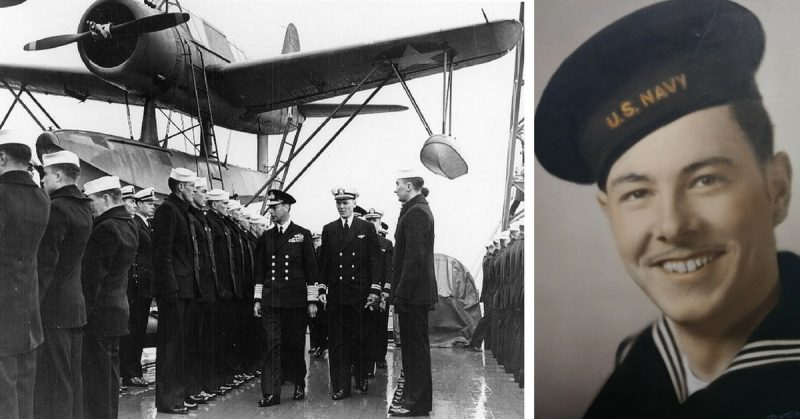War History online proudly presents this Guest Piece from Jeremy P. Ämick, who is a military historian and writes on behalf of the Silver Star Families of America.
Relaxing in a comfortable chair in his New Bloomfield area home, Leo Scrivner wears an infectious smile that belies many of the hardships he witnessed decades ago, when making the journey as a teenager in Russellville to participating in several deadly campaigns aboard a U.S. Navy battleship in World War II.
Born in 1925, Scrivner left school during his sophomore year at Russellville High School to attend a welding school in Jefferson City. After completing several months of training, he traveled to Oregon in early 1941 to begin plying his newly fostered welding skills by building ships in a defense plant.
“I came back home to Missouri in 1943,” said Scrivner, “and decided to enlist before they drafted me.” With a chuckle, he added, “I chose to enlist in the Navy because I really didn’t want to sleep in a foxhole.”
When someone asked him what he would do if his ship were attacked and sunk during the war, Scrivner firmly replied, “I’ll worry about that when we get to it.”
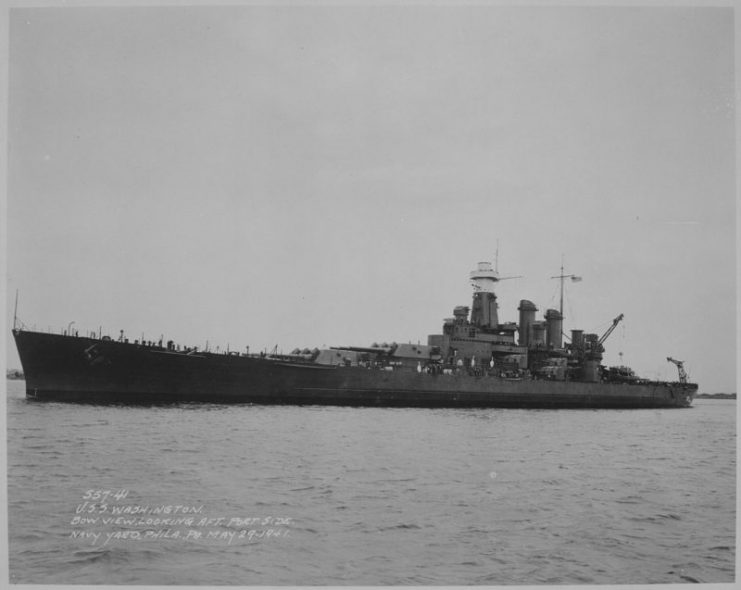
Inducted into the service with several men from Jefferson City, the 18-year-old recruit traveled to the Farragut Naval Training Station in Idaho in December 1943 to begin his basic training. From there, he received orders to report for service aboard the USS Washington (BB-56)—a North Carolina-class battleship commissioned in the spring of 1941.
Scrivner explained that when he reported to the ship in March 1944, it was in dry dock in the Puget Sound Navy Yard in Bremerton, Washington undergoing repairs. While maneuvering in the darkness near Kwajalein Island weeks earlier, the USS Washington collided with the USS Indiana, resulting in the death of several sailors and necessitating repairs to both vessels.
After receiving a new bow, the USS Washington departed the West Coast in May 1944 with Scrivner now aboard. Throughout the next several weeks, the untested sailor was provided training on the operation of one of the 20mm anti-aircraft guns used to defend their vessel.
The ship soon joined the American fleet and went on to participate in several campaigns throughout the Pacific to include bombardment of enemy emplacements at Tinian and Saipan. During the Battle of the Philippine Sea, Scrivner witnessed the dedication of kamikaze pilots, who would damage ships by crashing into them with their aircraft.
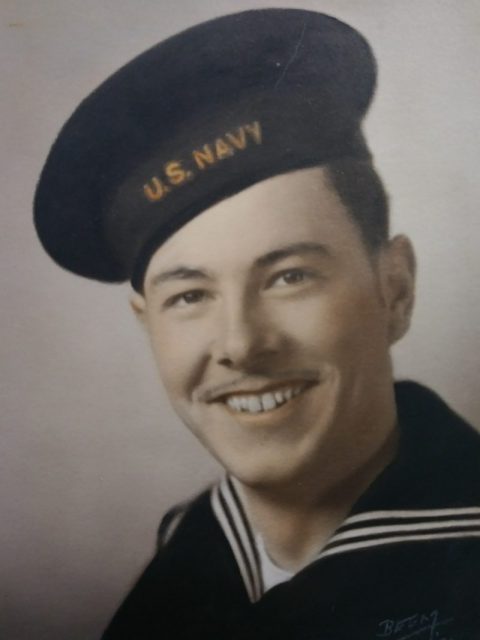
“There were a number of kamikaze pilots coming in during the battle and they hit some of the other ships in the fleet,” recalled Scrivner. “There was one time when a kamikaze was coming in toward our ship and all of the guns were shooting at him—I remember him flying so low near the deck of our ship that I could see the Japanese pilot grinning before his plane crashed in the ocean.”
The next several months continued at a frenetic pace as the USS Washington supported the fleet throughout a number of engagements in the Pacific including the bombardment of Japanese defenses during the battles for Iwo Jima and Okinawa in the early months of 1945.
The USS Washington earned several distinctions during the period of World War II with her gun crews firing more than 350,000 rounds of 20mm, repelling an estimated 53 incoming enemy air attacks and never being hit or losing a sailor to an enemy action.
“The closest I came to an injury during my time on the Washington was when I dropped a box of ammunition on my foot and smashed my toe,” said Scrivner.
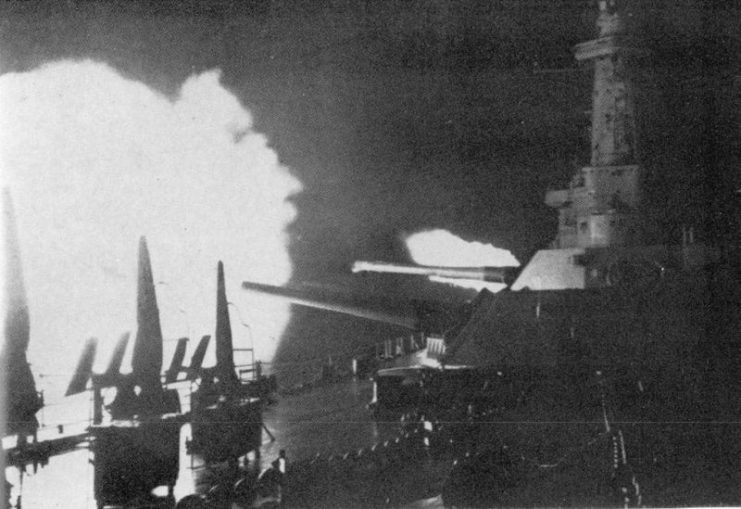
Scrivner returned home on leave in August 1945 but soon headed back to the West Coast to board the USS Washington, which was scheduled to depart for the invasion of the Japanese mainland. While on the train, he learned that the war had ended.
“They announced on the train that the war was over and everybody on board began cheering,” Scrivner said. “Needless to say, I felt relieved.”
After the war, Scrivner recalled, the guns were removed from the USS Washington and the vessel utilized as a transport to bring American troops back from England. In April 1946, after several weeks of transport duty, he earned enough points to receive his discharge from the Navy and returned to Russellville to begin his post-war career.
The year after his discharge, the great battleship once known as the USS Washington was decommissioned and more than a decade later, in absence of any recognition for its grand performance in World War II, underwent the melancholy retirement of being sold for scrap.
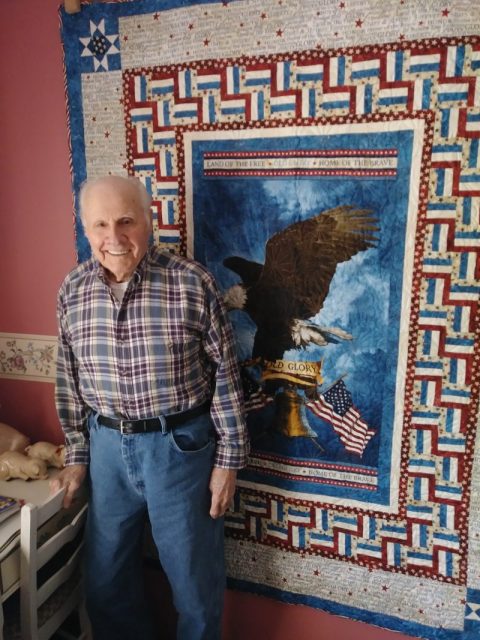
Scrivner married in January 1947 and he and his wife, Dora, raised six children together. The former sailor owned and operated gas stations for a number of years and later sold feed for a company in Pilot Grove. He closed out his career several years ago transporting automobiles and driving a courtesy van for a local automobile dealership.
With many triggers to transport his reflections back to the years he spent in the service, Scrivner explained that the most poignant reminder comes when a specific tune is played since it was something he heard during funeral ceremonies that occurred on the USS Washington during the war.
“One of the most disturbing parts of our duty was to pick up bodies out of the water from other ships that were sunk,” the former sailor recalled.
With the heaviness of forlorn memories, he added, “We would hold funeral services aboard our ship for them and any time I hear Taps played, it brings tears to my eyes because I can still see them hoisting the bodies of those sailors over the side of the ship when they were buried at sea.”
